It would have done more. That’s the (impressively) long and (not so) short of it. On a day-long drive out of London, skirting the south coast of England and then charging back into the capital, the Polestar 2 proved itself to be capable, comfortable — and even a bit of a head-turner.
It’s a surprise, that last one. So, before we buckle up and head off, let’s take a look at the thing. Because, to all intents and purposes, it shouldn’t be grabbing the public attention the way it does. The Polestar 2 looks like a Volvo — albeit one from five years in the future (there’s a reason for that; Polestar is a sub-brand of the Swedish automaker). It has softly squinting headlights, a boxy back and only a handful more angles and definition lines than a S60. It looks like a relatively normal saloon — admittedly one with a couple more muscles.
And yet, the heads really do turn. Perhaps it’s because, with only a shade over a thousand of these cars currently on British roads, even motoring enthusiasts can struggle to identify it. Or maybe — and this is what we suspect — people like it because of its understatement. The thing is an electric wolf in suburban clothing; a modestly handsome motor that can really move itself — but move others, too.
It’s unusual, it’s attainable (from £49,900) and it’s covetable. That’s the big three. So no wonder it’s turning heads. And, now we’ve got that settled, let’s set off.
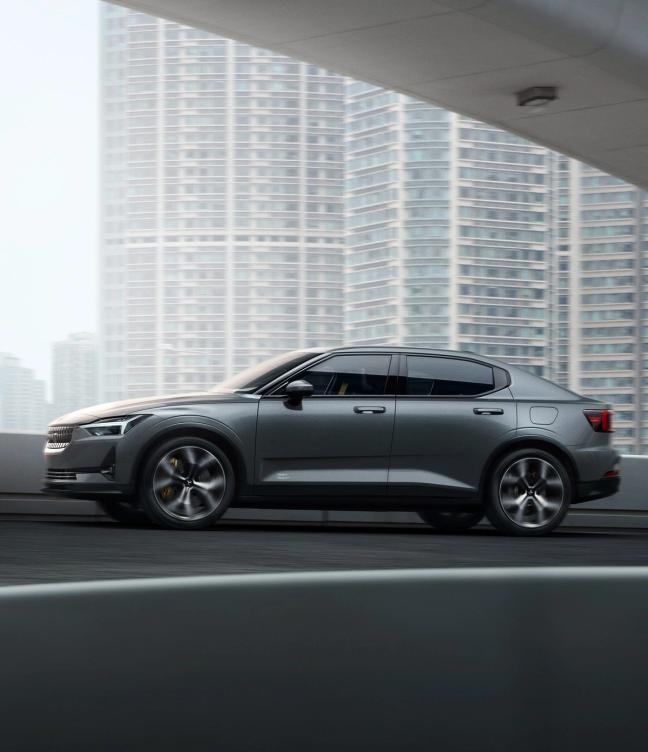
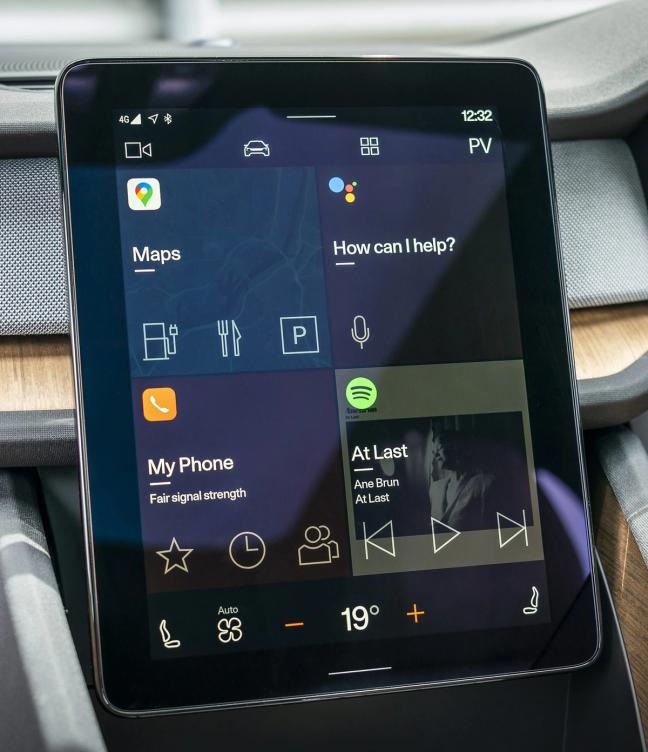
On the end-to-end, gridlocked roads of London, the Polestar 2 quietly gets on with its job. And that ‘quietly’ is both metaphorical and literal — thanks to the practically silent all-wheel-drive electric powertrain. Driven by 400V Lithium-ion batteries, the car’s two Valeo-Siemens electric motors have some serious power to offer — when they finally roll us out of the central London congestion.
But the delay gives us time to contemplate — and this is what we’re thinking: here at Gentleman’s Journal, we’ve never been bowled over by automatic cars. We’d be happy crunching through gears, winding our own windows and contending with a muscle-pulling lack of power steering. We’d almost say it’s fun. But city-centre driving, as anyone who does it on a regular basis will tell you, is not fun in any car — so the single-speed, automatic-alike gearbox of the Polestar 2 is perfect for all the merging, crawling and general antagonism city centres will rev your way.
And that, chiefly, is because it creeps. ‘Creep Mode’ — while perhaps not the best name for the function — is a wholesome, wholly useful solution to traffic jams. Suddenly, tail-to-tail traffic is transformed from a nerve-wracking, tenterhooks trial behind the wheel to a period of blissful, self-driving salvation. And we’ll put our hands together for any car that can alleviate even some our our city-centre stress.
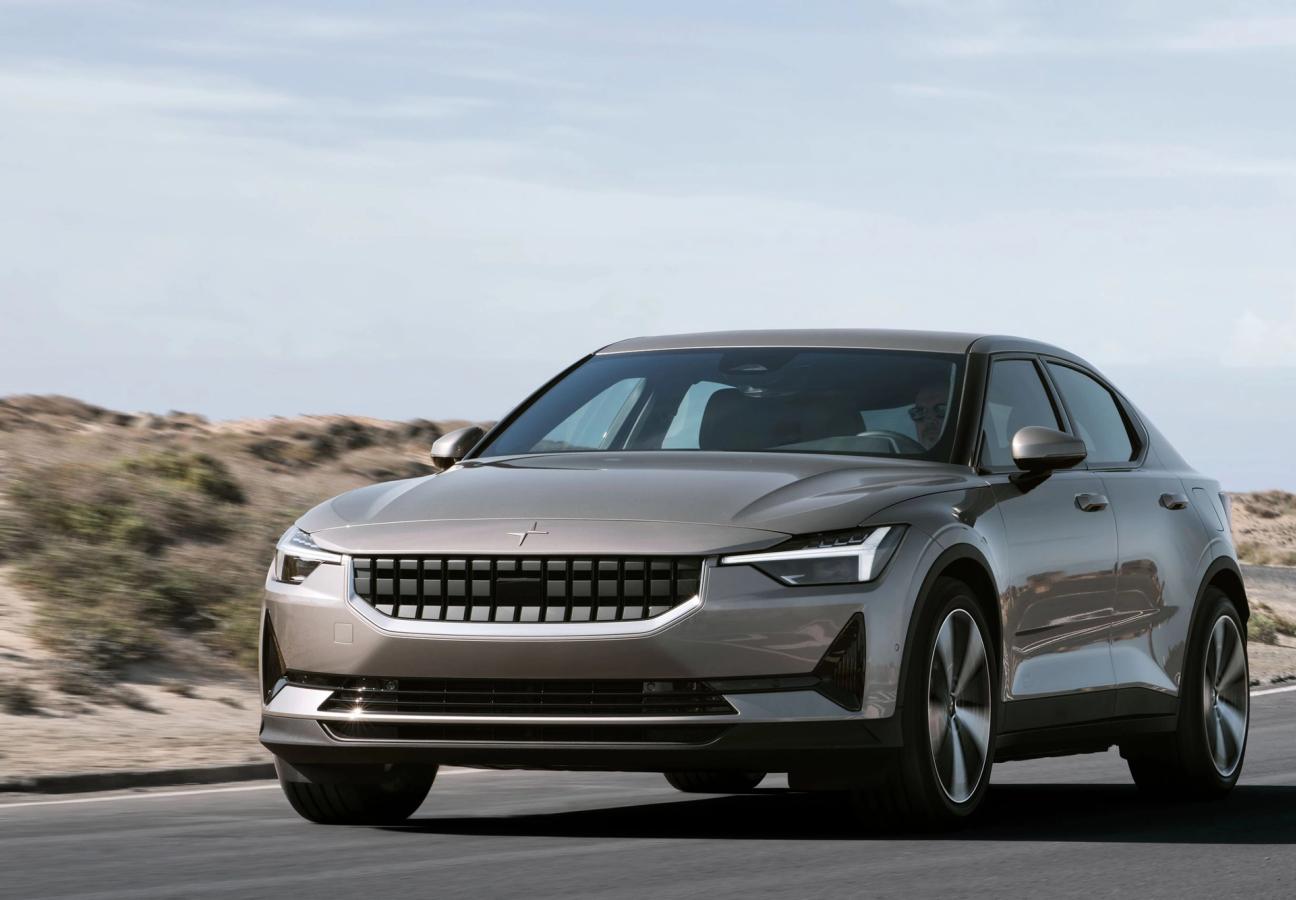
And then comes the open road. It is here, on the A21’s twisting ribbon of tarmac, that the Polestar 2 really comes alive. It can accelerate from 0-62 mph in 4.7 seconds — which is faster than an Aston Martin DB9. That also means, if you find yourself stranded in the wrong lane at a red light or roundabout, the instant acceleration will manoeuvre you out of almost any tight spot. (Also, if any boy racers try to pick a dual carriageway duel with your grown-up motor, they won’t stand a chance.)
Even on the smaller, single-lane roads of the sandy south coast, the car proves its mettle. The Öhlins Dual Flow Valve (DFV) suspension soaks up wave upon wave of humps and bumps — and Brembo brakes ensure we can turn even the tightest, blindest corners of single-track lanes safely.
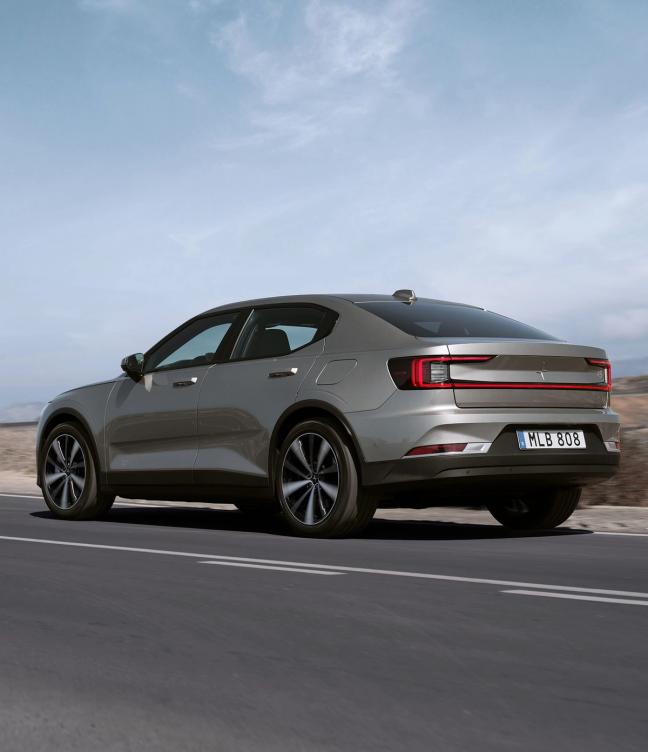
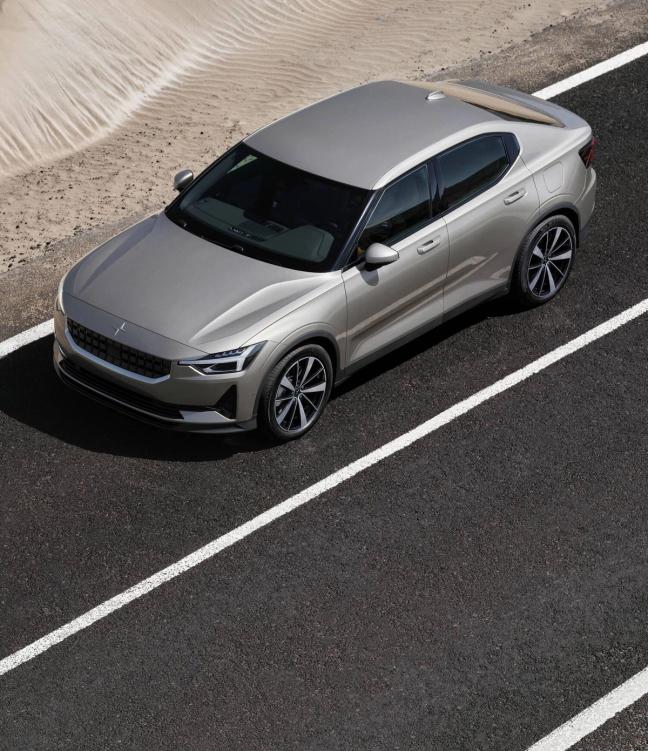
Inside, too, the car offers more than your everyday saloon. This particular model, with ventilated Nappa leather and reconstructed wood detailing, looks sleekly futuristic — and has the digital kit to cash those high-tech cheques. There’s two-zone climate control, powered driver and passenger seats and highly intuitive Adaptive Cruise Control (again, like the single-speed gearbox, cruise control isn’t something that usually appeals to nuts-and-bolts drivers. But so ironed-out and thought-through is it here that even the greasiest monkeys won’t mind it).
And then there’s the entertainment system. The Polestar 2 is the first car to be fitted with Google Android Automotive; a set-up controlled using a tablet attached to the dash. It’s as ergonomic a system as we’ve ever operated on a modern car — able to quickly flick through radio stations or switch Spotify playlists with ease. Pair such a system with lumbar support and heated seats, and you’ve got the ideal interior for a lengthy, lazy road-trip.
"The Polestar 2 is the first car to be fitted with Google Android Automotive..."
Which brings us to charging. Still driving — past Hastings, Camber Sands and on towards Folkestone — the car apepars to be making a mockery of its own conservative range calculations. The miles are passing faster beneath our tyres than they’re dropping on the dash; with the cruise control, especially, seeming to eke every drop of power from every percent of charge.
In cities, this Polestar 2 should manage a (frankly astounding) 348 miles before it needs charging up. That’s over 50 miles more than the Jaguar I-PACE, and only 50 miles less than the Tesla Model S Long Range Plus — a car for which you’ll pay over £15,000 more. Polestar quotes the combined (city and motorway driving) range figure as 292 miles. But, as we’ll reiterate, we think it would have done more.
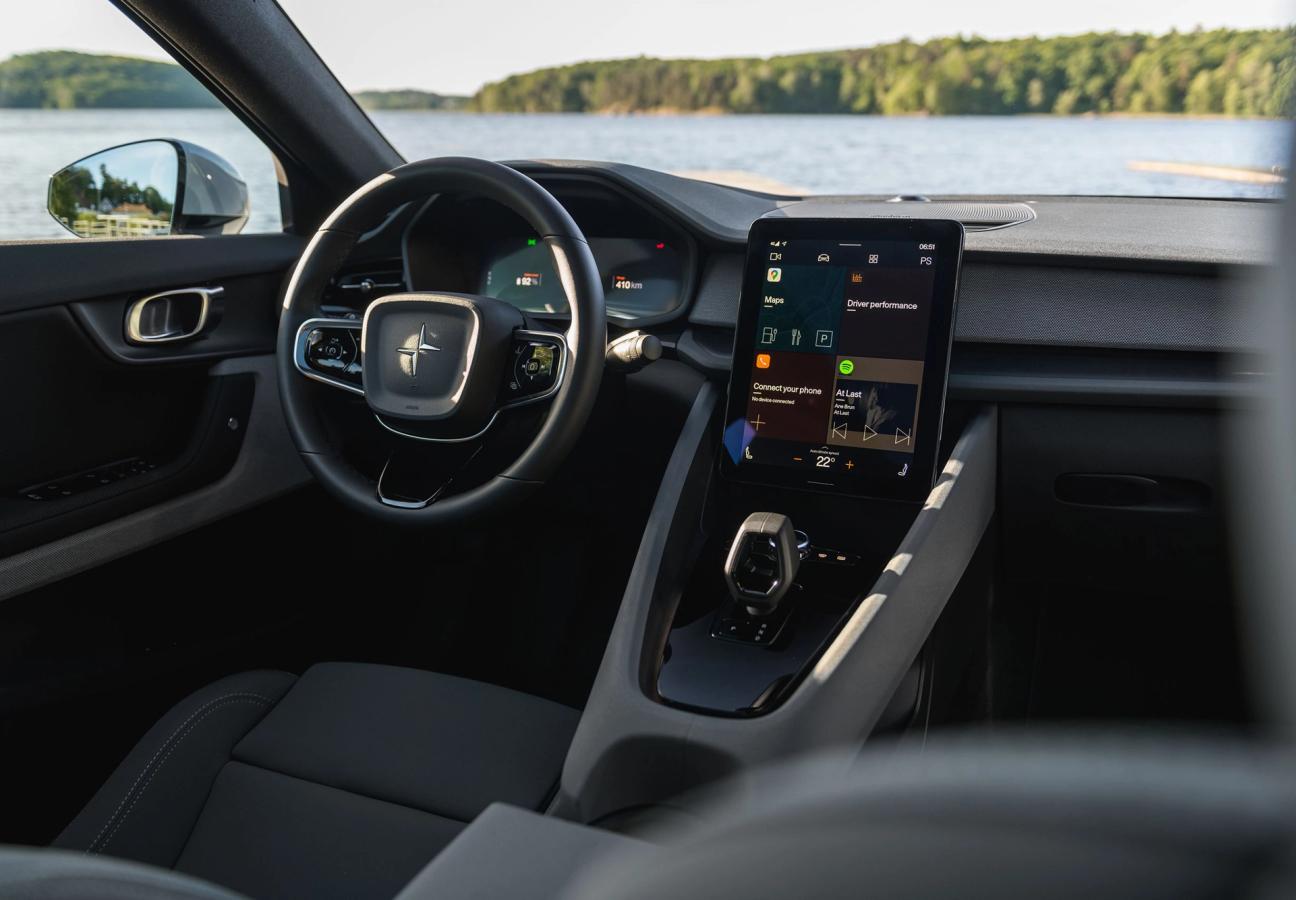
Even when you do need to charge up, connecting to an (albeit rare) 150kW rapid-charging CCS connector will see your Polestar power from 20% to 80% in just 20 minutes. It’s still longer than a petrol pitstop if you’re out-and-about — but not by much.
And the charging process is perhaps the highlight of Polestar ownership. From the green light that sweeps across the dashboard to indicate charging to the space-age connector plugs themselves, this is a car that gives you a real feel of the future. So maybe that’s why people love to look at the Polestar 2. Indeed, after parking up in a provincial coastal town, and charging this ultramodern machine in front of a bunch of onlooking beachgoers, its head-turning credentials start to make sense…
Want more car tests? Here’s why you can’t stay mad at a Morgan Plus Four…
Become a Gentleman’s Journal member. Find out more here.

Become a Gentleman’s Journal Member?
Like the Gentleman’s Journal? Why not join the Clubhouse, a special kind of private club where members receive offers and experiences from hand-picked, premium brands. You will also receive invites to exclusive events, the quarterly print magazine delivered directly to your door and your own membership card.
Further reading

Editor’s Picks: Nothing phone, Ressence watch, clothsurgeon jacket and Tom Straker’s bread knife

The Gentleman’s Journal Car Awards
